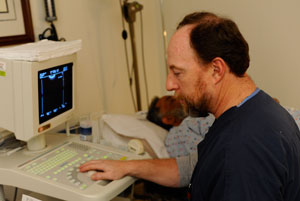 Penis Problems Penis Problems
Select from the following topics to learn more about Penis Problems.
Pellets for the Prostate - Effective Treatment for Prostate Cancer
The best treatment for prostate cancer that is confined to the gland itself is radical surgery or radiation therapy. Radiation therapy can be delivered external to the body but the high energy radiation waves also may cause injury to the surrounding tissue such as the bladder and the rectum. In the last few years a new treatment option has been added which makes use of tiny radioactive pellets, about the size of a staple, which is directly place into the prostate using hollow needles. These implants deliver a highly concentrated radiation dose into the cancer and a much lower amount of radiation is applied to the surrounding tissues. There are two types of radioactive seeds, iodine and palladium. 
Click here to learn more.
When Your Sperm Turns Red
No one read the newspapers the last week in July and couldn't help but notice and admire the courage of Lance Armstrong, the 1999 Tour de France winner of the most prestigious race in bicycling. Lance Armstrong had cancer of the testicle that spread to his lungs and brain when it was diagnosed. Lance Armstrong was not in just a bike race but in a race for his life. He made a comeback after multiple surgeries and several courses of chemotherapy that was considered impossible by nearly everyone except Lance Armstrong!
Click here to learn more.
Peyronie's disease
Peyronie's disease is an inflammation of the erectile bodies in the penis, otherwise known as the corpora cavernosa. Peyronie's disease is more common than people think, occurring most often in men between the ages of 40 to 60, but can occur at any age. The causes of Peyronie's disease are unknown. In fact, since the description by the French surgeon, Francois Peyronie, in 1743, not a great deal of progress has been made in understanding the reasons and progression of Peyronie's disease. Peyronie's disease probably represents an inflammation with subsequent scarring of the veins that are in the corpora cavernosa or 'erectile bodies' or channels in the penis. Occasionally, infection or trauma can cause Peyronie's, but for the most part, it's reason for starting is unknown. The disease usually presents with one of three problems: most common is pain on erection; secondly is curvature of the penis with erection; and lastly, difficulty having erections, or impotence. All of these may lead to inability to have satisfactory intercourse.
Click here to learn more.
Peyronie's Disease: Current Management
A medication called Verapamil has been found to break up the plaque. The primary way of delivery of the Verapamil is through injection into the plaque. The penis is numbed with Novacaine at the base and then Verapamil is injected into the plaque. This is done every other week for 12 sessions. The success is measured by decrease in deformity and curvature is reported to be approximately 60% of the time.
A compounding pharmacy out of San Antonio has also developed a topical Verapamil Cream that is reported to be absorbed into the plaque to work in a similar fashion as the injection. There is some controversy as to whether or not it is successful. It is fairly expensive, approximately $250 a month, and treatment is at least for three to six months. Clinical studies are on the way for a different type of injection using an enzyme called collagenase to break up the plaque. Surgery remains a mainstay when conservative measures fail.
Click here to learn more.
Phallic Fallacy - Myth and Misinformation About Penis Size
There is seldom a man who goes to a public restroom and looks at the man using the urinal next to him to compare penis sizes. Freud talked about women having penis envy and man having "size envy." Men seem to think that the size of the "member" determines the pleasure received by the partner. However, this is probably a fallacy since the partner's vagina is a collapsed structure and expands to accommodate whatever size male organ is inserted. It is the friction of the penis against the clitoris that determines the pleasure of the partner and a larger penis does not necessarily imply more friction or stimulation of the clitoris.
Click here to learn more.
Testes Self-Examination
Testicular cancer is the most common type of cancer in men ages 20 to 35. Yet, because it accounts for only about 1 percent of all cancers in men, many people have never heard of this type of cancer.
Testicular cancer is of special concern to young men. It can occur anytime after age 15. It is less common in middle-aged and older men. White men are four times more likely to develop testicular cancer than black men. The rate among hispanic men lies between those of blacks and whites.
Two groups of men have a greater risk of developing testicular cancer--those whose testicles have not descended into the scrotum and those whose testicles descended after age 6. Testicular cancer is 3 to 17 times more likely to develop in these men.
Click here to learn more.
Reprinted with permission from Dialog Medical, dialogmedical.com and Neil Baum MD, neilbaum.com.
[Top]
Quick navigation links:
What is a Urology Center | Urologist | Urology Conditions | Urology Services | Resources for Health | Contact Urology Center in North Texas | Sitemap | Home
Disclaimer:
The pictures displayed in www.TexasUrology.com are images of actual patients and employees who have consented to have their picture in this website.

Website Design & Educational Content © Copyright 2023 MedIngenuity, LLC
Medingenuity develops content-rich educational web sites for urologists and urology group practices.
|